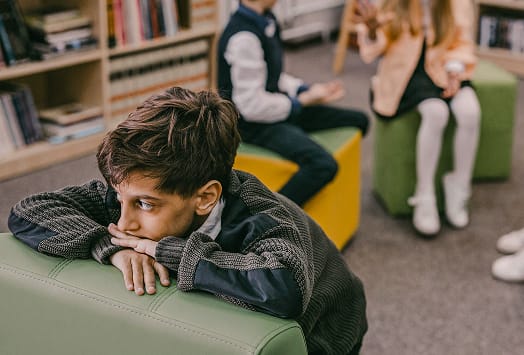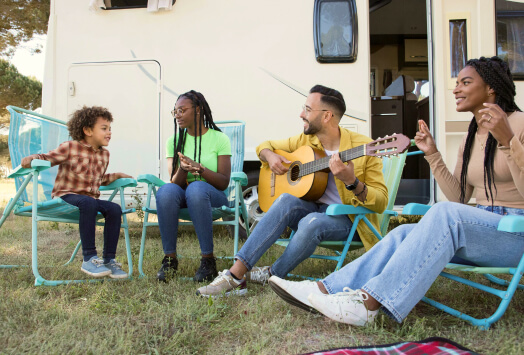As a parent, you may wonder why preschoolers should do science projects. Science helps little ones learn about the world around them and become acquainted with scientific principles. Preschoolers are open-minded and curious — constantly asking questions and exploring the world around them. Bringing science home is the perfect way to satisfy that curiosity and create fun teaching moments along the way.
Keep reading to learn about some fun science projects that are perfect for youngsters. Remember — these experiments require the help of an adult and children supervision!
1. Classic volcano
Supplies: Vinegar, red food coloring, dish soap, a small container, and plaster or papier-mâché
An erupting volcano is a fun science project for a preschooler to make alongside their parents. The ingredients are simple and the process is quick and the experiment is a great way to teach kids about these beautiful ecosystems.
Help your child create a volcano with plaster or papier-mâché. Start with a small container and mold the volcano around it! Make sure that you can dish soap, red food coloring, and vinegar inside your volcano.
The baking soda will go in first, then the dish soap, a couple of drops of food coloring go next. Finally, about an ounce of vinegar is needed for the eruption to occur.
2. Coke and mentos
Supplies: Cola, mentos candy, a soda bottle or cups
Get ready for some fizzle and pop! The coke and mentos experiment is a great project for a preschooler to try with some help from an adult. This experiment is the perfect way to teach a preschool child about chemical reactions! Parents can set up a few cups of coke and put different types of mentos to their side. The children can then drop the mentos — try using both the fruity and minty kind — into the soda and watch the reaction closely.
The children can note whether the different mentos created a different reaction and which soda produced the most foam.
3. Sink or float
Supplies: Container, water, crayons, leaves, seeds, soap, and found objects
Discover how objects float and sink in this experiment! This is a fun activity for toddlers to learn about water and how different objects react when submerged in water.
The list of items is varied but some common items the children can try are crayons, leaves, sunflower seeds, and bars of soap. Encourage children to make observations on the weight, shape, and physical qualities of objects before they test whether something floats or sinks.If you want to get super creative, consider making boats from found objects in your home! Test how your handmade creations float using a container, sink, or bathtub.
4. Slime time
Supplies: Baking soda, white glue, food coloring, glitter
Slime is having a moment — why not join in on the fun? Making slime is a fun activity that all toddlers will enjoy!
Making slime can teach children about the different forms matter takes and how mixing different ingredients can create new substances.
Slime can be made by mixing a cup of white glue and a tablespoon of baking soda. Food coloring or glitter can be added to make the slime more fun. Mix the ingredients together to thicken until you find your perfect slimy consistency.
5. DIY bubbles
Supplies: Warm water, sugar (granular or syrup both work), and dish soap
Who doesn’t love bubbles? They’re pretty, fun, and provide endless hours of entertainment for kids.
Parents or teachers can help preschoolers make bubbles using different types of water, sugar, and soap and discuss which one worked the best and made the best bubbles. A simple bubble recipe includes mixing a cup of water, two tablespoons of corn syrup, and four of dish soap. Feel free to swap in different temperatures, types of sugars, and soaps to explore what works to make the best bubbles. To learn more about making them from scratch, dive into this recipe.
6. Dig for fossils
Supplies: Dirt, shovels, buckets, sand, clay
Most children love mess — and yes, that includes dirt. Turn a fun day playing in the dirt into a science activity that can teach children about the fascinating properties of soil.
While children should be allowed to roam around and play for some time, parents can give them some buckets and shovels and have them collect different kinds of dirt including gravel, sand, and clay. Encourage children to bring findings home and investigate their origins. Children can then examine the differences between the materials to learn more about them.
7. Penny polish
Supplies: Pennies, vinegar, soap, water, lemon juice
This easy science activity is a great way to teach toddlers about how different chemicals interact with each other. The children can collect some dirty pennies from around the house or from their piggy bank.
A parent can set up a couple of different cleaning solutions including vinegar, soap and water, and lemon juice. The children can proceed to clean the pennies in the different solutions and watch to see which works best.
8. Popcorn party
Supplies: Popcorn, healthy oil, a pan
There are many preschool science experiments for kids to try out and making popcorn is one of the most exciting for them. Making popcorn on the stove is the perfect way to get children excited about science and show them how the different forms of matter are included in the process of making popcorn.
For this experiment, adults should lead and children can watch! Make sure to practice stove safety if you pop popcorn.
The perfect science projects for a preschooler
Help your preschooler fall in love with science through experiments!There are so many fun science projects children can complete to spark their interest in all of the fascinating aspects of the scientific world.
There are so many aspects of science for young minds to explore! Explore science classes today to schedule your next adventure.
















